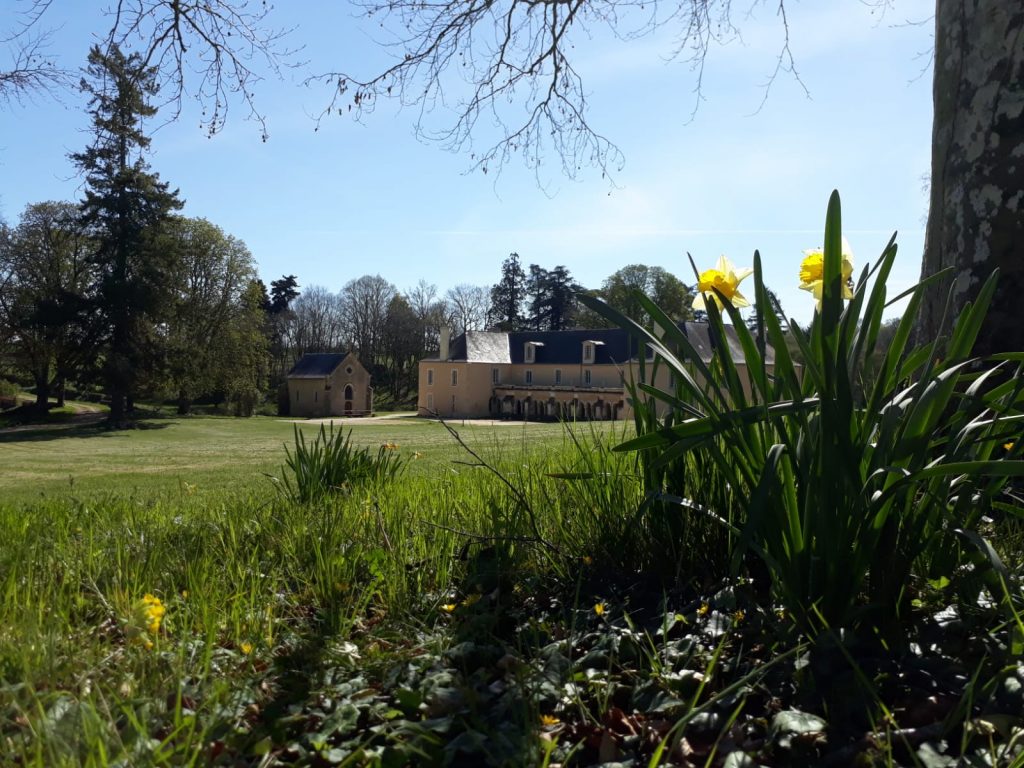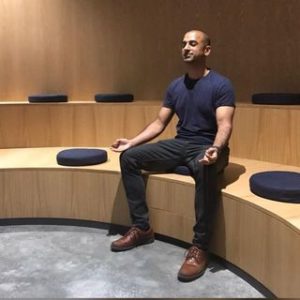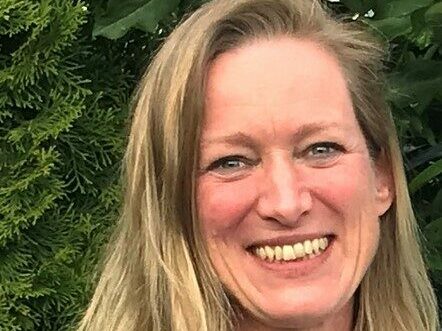In this article, we set off on an exploration with DP Architect Kailas Moorthy on how Community has informed the design of Bonnevaux, from the aspiration to build a home for the World Community for Christian Meditation, to DP Architects’ belief that Community is one of the cornerstones of designing-for-wellbeing.

- How does defining a sense of Community inform the Architecture at Bonnevaux?
We at DPA believe that moulding the places we create to enable a sense Community is one of the cornerstones of designing-for-wellbeing. That includes designing inclusive places for all, where we feel at ease, cared for and a part of something that is greater than ourselves. If we are confident that we are not being alienated for who we are or what we chose to be, we will be more inclined to redistribute our energies from shielding ourselves to delivering more rewarding outcomes. Perhaps the results might benefit the commonwealth. If we feel a part of a Community, we are likely to nurture that community’s infrastructure: cut the grass, repair the window sill. Ultimately, these mindsets and habits will mean this building fabric is maintained, cherished and most importantly: sustainable in the long term.
Our client at Bonnevaux is the WCCM (The World Community for Christian Meditation). It’s in their name: the WCCM at its core is a Community and at Bonnevaux, we are providing a home for this community.
- What are the big principles at play here?
WCCM promotes peace on many levels: from the internal and local to the global and geo-political. Responding to this, the retreat’s design concepts were shaped by these philosophies on how to live a worthwhile wholesome life. This was reinforced by their belief that meditation can facilitate pauses within today’s hectic schedule, and through this daily practice we find the space to discover meaning.
To complement our client’s philosophies, stood our ambition to deliver places that promote wellbeing. DP Architects have formulated a set of design parameters for delivering spaces that influence our physical behaviour and mental outlook, and improve our sense of wellbeing. These principles are categorised into four key pillars, one of which is Community: Designing inclusive places for all, where we feel at ease and cared for, and places we are more likely to preserve.
This Pillar informs design to facilitate spaces and places that encourage the formation and development of sustainable and receptive Communities. Feeling a part of a community makes us feel better. If we surrounded ourselves with people we care for and who care for us, and occupy spaces where we feel at ease, this improves our sense of wellbeing.
This translates at Bonnevaux in incorporating spaces that encourage group activities and educational moments, as well as spaces for physical and mental fitness which can be shared as a group. These spaces should encourage a sense of belonging, safety and equality among its users, leading to a culture of sharing, activating and nurturing of the community itself.
Along with Community, are three additional design pillars. We have Biophilia, a connection with nature, achieved by bringing greenery inside or creating visual and physical connections to outside, resulting in a sense of wellbeing; Hapticity, a mindful connection to all our senses allowing us to experience the full spectrum of life and through these associations, better empathise with others; and lastly and possibly most importantly: Contemplation, radically simple design creates space that is inducive to both relaxation and focused effort, meaning we can perform at our optimum whilst remaining open to self-heal and care for others.
Fabian Pfortmüller from the Together Institute describes Community as: “A feeling of fellowship with others, as a result of sharing common attitudes, interests and goals. A group of people that care about each other and feel they belong together.”
At Bonnevaux, certain spaces providing privacy for moments of self-reflection and inner calm. Others encourage dialogue and communal activities, where the serendipity of chance meetings and the germination of new friendships, allow for the shaping of a resilient, receptive and cohesive community.
- Can you give an example so we can understand how these Design Pillars are delivered in practice?
Each of our four Design Pillars comes with a set of drivers that explain how these ambitions can be delivered.
For example, within the pillar Community, the driver Legibility requires clear, user-friendly and vibrant wayfinding to maximise the legibility and usability of spaces. This makes journeys through these spaces clear for all, meaning we’re stress-free and in a ‘good place’ when we arrive at our destination.
Within the wayfinding strategy at Bonnevaux, our approach was to use the minimal amount of signage, whilst delivering a clarity of journey through the site for new arrivals. Thanks to the Stables site positioning (at Bonnevaux’s centre), and its central arch that frames the central axis through the site, guests are provided a clear and intuitive passage to the first point of welcome at the main reception (located at the stables). First impressions count. Creating a warm, inviting, and stress-free welcome to Bonnevaux Meditation Retreat was essential in allowing new arrivals the understanding that this would be a safe nurturing place to heal and grow.
- Were there any realities that compromised the realisation of a healthy Community?
As the Abbey is an existing building, sound travels far through all the existing cracks. Even in a community that maintains a certain level of quiet and restraint, noise can still interfere with the search for peace. And maybe, at times, this atmosphere of silence amplifies any unwanted sounds that do erupt.
In studies of functioning communities, especially those who live in communes and therefore have more all-day exposure to one another (such as in the now growing-in-popularity Co-living communities) it has been identified that the designation of private spaces and the ability to be alone becomes even more essential as without it many of the members begin to feel overwhelmed and smothered by their neighbours.
The forces isolation during this time of Covid19 and ‘Social Distancing’ has reminding us that social contact is crucial to maintain a sense of emotional wellbeing. But the reverse is also true: we need to be provided with opportunities for privacy and separation, to support self-reflection. ‘deep work’, and ultimately make the moments of engagement more cherished.
This attack of unwanted sounds has reaffirmed the importance of quiet and privacy. Hearing a neighbour typing on a keyboard or talking to another is annoying for both parties: the one side is interrupted from their thoughts, the other is left with a sense that their privacy has been invaded.
Noise affects the ability to concentrate, but more importantly our quality of sleep: a cornerstone of wellbeing. A bad-nights-sleep can seriously compromise our ability the perform, and emotionally and appropriately engage with others the next day, bringing tension to the community.
(For the subsequent Stables and Contemplative Village buildings, as these will be full interior fitouts of external building shells and new-builds respectively, we will not have the same acoustic concerns created by the Abbey’s existing internal structures.)
- How is this Community at Bonnevaux unique to other projects you have worked on?
Again, our client’s name hints at one of the unique aspects of this project. The first two words in the WCCM title are World Community. The WCCM at its core is a global community.
Vasudhaiva Kutumbakam means: “the world is one family” in Sanskrit, from the Vedic traditions of the Upanishads: we are all interconnected. In designing-for-wellbeing this awareness of this co-dependance can lead to a sense of belonging, wellbeing and possibly encourage us to take better care of the planet we all live on. The world is one family; the world is our home.
This World Community is everywhere and this place, Bonnevaux is simply the manifestation of their home; a place that welcomes all, and offers them the opportunity to meet in person.
Ironically, in this time of Covid19, although the building-works progress, for most, unable to physically be there due to travel bans and stay-at-home orders, Bonnevaux exists as a virtual representation, viewed in social media or video conferencing platforms. Alongside this interface, we have the residential community homes at the Abbey who experience the place for real. They live in the spirit of the Rule of St Benedict together with volunteers from many parts of the world.
Covid19 means, for now, I am not allowed to visit the construction site: I am relegated to interacting through the constraints of Zoom: only able to experience Bonnevaux visually via my monitor and acoustically through its integrated speakers *.
This has reminded me that once the meditation and retreat centre opens, members and guests will experience the place in two very distinct ways. Firstly, the ones who are physically there will engage with all their hapticity, for example experiencing in the Barn the tactile warmth of the timber floor upon which they are seated, cross-legged, in meditation. The second group who attend virtual conferences will experience the visually uncluttered calm of the spaces and the acoustic clarity of the Audio-Visual system. It is crucial that we, as the architects, design for both: the ‘bricks and mortar’ for the ones who will be there in-person, and consider the needs of the ones who will only ever engage with the spaces on social media, in photos or during video conferences.
* UPDATE: Bonnevaux is now open for short and long stays with a COVID protocol in place. The formal opening of the Retreat Centre is planned to March/April 2022)

Kailas Moorthy leads DP Architects’ global Wellbeing drive from our London Studio.
Follow Kailas on Instagram to learn how design might influence wellbeing, sharing tips on Staying Healthy and Designing Healthy Spaces to nudge us in the right direction…



